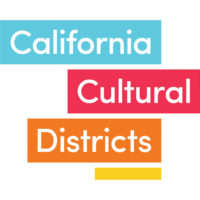Cultural Districts help foster economic growth, tourism and a creative workforce
 MORE CITIES ARE TURNING to art and Cultural Districts to foster economic growth, increase tourism and attract the creative workforce needed for the new economy.
MORE CITIES ARE TURNING to art and Cultural Districts to foster economic growth, increase tourism and attract the creative workforce needed for the new economy.
Across America, 13 states have established statewide Cultural District programs. The number of districts per states varies from 78 in Louisiana to under 10 in a number of states. Rhode Island has the oldest program (started in 1998), and the newest ones include California and Arkansas. (Visit our website SierraCulture.com for a U.S. Cultural District map.)
In October 2015, Governor Brown signed Assembly Bill 189, which empowered the California Arts Council to designate areas as state Cultural Districts. Cultural Districts are defined as well-recognized geographic areas with a high concentration of cultural facilities creative enterprises or arts venues.
The 14 finalists recommended for designation as Cultural Districts reflect the state’s rich heritage. Balboa Park Cultural District in San Diego; Barrio Logan Cultural District in San Diego; Downtown San Rafael Cultural District in the Bay Area; Rotten City-Emeryville Cultural Arts District in the Bay Area; Eureka Arts and Culture District on the North Coast; Grass Valley-Nevada City Cultural District in Gold Country; Little Tokyo in Los Angeles; Oceanside Cultural District in San Diego; Redding Cultural District in the Shasta Cascade region; San Pedro Cultural District in Los Angeles; SOMA Pilipinas in the Bay Area; the BLVD Cultural District in the Desert region; The Calle 24 Latino Cultural District in the Bay Area; and the Truckee Cultural District in the High Sierra.
